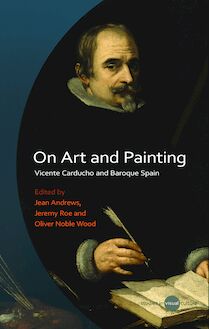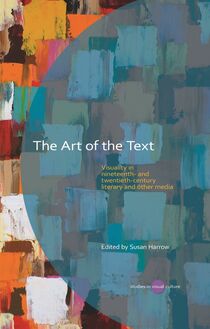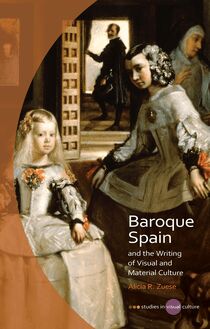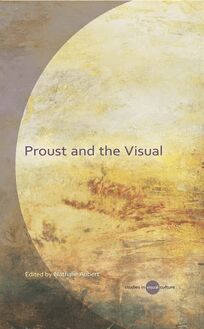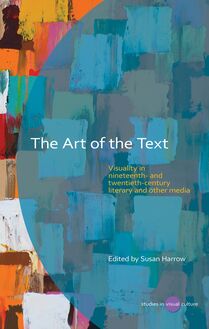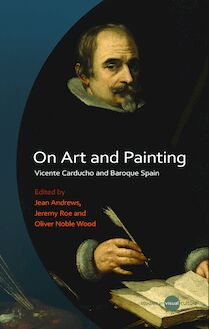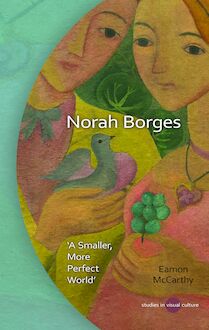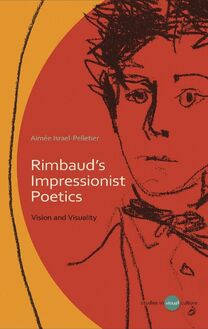Norah Borges , livre ebook
166
pages
English
Ebooks
2020
Vous pourrez modifier la taille du texte de cet ouvrage
Obtenez un accès à la bibliothèque pour le consulter en ligne En savoir plus
Découvre YouScribe en t'inscrivant gratuitement
Découvre YouScribe en t'inscrivant gratuitement
166
pages
English
Ebooks
2020
Vous pourrez modifier la taille du texte de cet ouvrage
Obtenez un accès à la bibliothèque pour le consulter en ligne En savoir plus
Publié par
Date de parution
01 septembre 2020
Nombre de lectures
1
EAN13
9781786836328
Langue
English
Norah Borges (1901–98) was the sister of the celebrated Argentine writer Jorge Luis Borges. She first began producing art in Switzerland, where her family was trapped during the First World War, and travelled to Spain before returning to her native Argentina with her new styles of painting. In the 1920s, her work was published on the covers of important cultural magazines, but she is now largely forgotten. In her works, Borges created a world full of almost angelic figures – describing it as a smaller, more perfect world – mostly a serene space dominated by women. This book explores how Borges created that space and developed her own unique style of painting, studying the connections she made with the leading artists and writers of her time.
Acknowledgements
List of illustrations
Introduction
Chapter 1 – A Style of One’s Own
Chapter 2 – Finding an appropriate (Argentine) style
Chapter 3 – Consolidating styles between Argentina and Spain
Chapter 4 – Creating a perfect world
Conclusions
Publié par
Date de parution
01 septembre 2020
Nombre de lectures
1
EAN13
9781786836328
Langue
English
NORAH BORGES
S TUDIES IN V ISUAL C ULTURE
SERIES EDITORS
Margaret Topping
Queen’s University, Belfast
Rachael Langford
Cardiff University
Giuliana Pieri
Royal Holloway, University of London
EDITORIAL BOARD
Mieke Bal
University of Amsterdam
Paul Cooke
University of Leeds
Anne Freadman
The University of Melbourne
María Pilar Rodríguez
Universidad de Deusto
Eric Thau
University of Hawai’i at Manoa
available in series
Jean Andrews Painting and Devotion in Golden Age Iberia: Luis de Morales (2020)
Jean Andrews, Jeremy Roe and Oliver Noble Wood (eds), On Art and Painting: Vicente Carducho and Baroque Spain (2016)
Nathalie Aubert (ed.), Proust and the Visual (2013)
Susan Harrow (ed.), The Art of the Text: Visuality in nineteenth- and twentieth-century literary and other media (2013)
Aimee Israel-Pelletier, Rimbaud’s Impressionist Poetics: Vision and Visuality (2012)
S TUDIES IN V ISUAL C ULTURE
Norah Borges
‘A Smaller, More Perfect World’
Eamon McCarthy
© Eamon McCarthy, 2020
All rights reserved. No part of this book may be reproduced in any material form (including photocopying or storing it in any medium by electronic means and whether or not transiently or incidentally to some other use of this publication) without the written permission of the copyright owner. Applications for the copyright owner’s written permission to reproduce any part of this publication should be addressed to the University of Wales Press, University Registry, King Edward VII Avenue, Cardiff CF10 3NS.
www.uwp.co.uk
British Library CIP Data
A catalogue record for this book is available from the British Library
ISBN 978-1-78683-630-4
e-ISBN 978-1-78683-632-8
The right of Eamon McCarthy to be identified as author of this work has been asserted in accordance with sections 77 and 79 of the Copyright, Designs and Patents Act 1988.
The publisher has no responsibility for the persistence or accuracy of URLs for any external or third-party internet websites referred to in this book, and does not guarantee that any content on such websites is, or will remain, accurate or appropriate.
Cover image: Pablo y Virginia (1927), oil on wood, 73x83cm. © Herederos de Norah Borges.
Cover design: Olwen Fowler
Contents
Acknowledgements
List of illustrations
Introduction
1 A Style of One’s Own
2 Finding an Appropriate (Argentine) Style
3 Consolidating Styles between Argentina and Spain
4 Creating a Perfect World
Conclusion
Notes
Bibliography
Series editors’ preface
Studies in Visual Culture provides a forum for ground-breaking enquiry into visual-cultural production in its social, historical and cultural contexts. The series places particular emphasis on the exchanges, transactions and displacements that link Europe to wider global contexts across the visual-cultural field. The series seeks to promote critical engagement with visual media as ideological and cultural as well as aesthetic constructs, and foregrounds the relationship of visual cultures to other fields and discourses, including cultural history, literary production and criticism, philosophy, gender and sexuality research, journalism and media studies, migration and mobility studies, social sciences, and politics. The Studies in Visual Culture series thus focuses on exploring synergies and key debates between disciplines, concepts and theoretical approaches, and offers an exciting new arena for testing and extending disciplinary, theoretical and conceptual boundaries.
Acknowledgements
I have to begin with sincere thanks to Roberta Quance. Roberta first introduced me to Norah’s work and has always been so generous with her knowledge. I am deeply grateful to her for her support for my work and for continuing to share her ideas with me. I would never have been able to complete this project without her continued guidance.
I owe a huge debt of gratitude to Norah’s son, Miguel de Torre Borges, and her grandson, Fernando de Torre. Miguel has been so generous with his time. He welcomed me into his home many times and shared recollections and memories, as well as giving me access to images and material held by the family. I was also very fortunate to meet and chat with Miguel’s wife, Babo, who was the model for the painting on Plate 14. My deep thanks to both of them for welcoming me so warmly at all times. Without them, I would never have developed such a deep understanding of Norah’s life. Fernando has also very kindly shared his own research and I hope we can continue sharing our Norah-related discoveries for many years to come. I am particularly grateful to the family for allowing me to reproduce so many of Norah’s works in this book.
A project like this relies upon a support network of academic mentors and friends who know when to ask about it and when not to, as well as providing their unstinting support along the way. Many thanks to Isabel Torres, Nigel Harkness, Anne Holloway, Ricki O’Rawe, Jackie Clarke, Georgina Collins, Jordi Cornella, Elizabeth Geary-Keohane, Kirsty Gowling-Afchain, Greg Kerr, PJ Lennon, and Henriette Partzsch.
I was exceptionally lucky to be welcomed by a group of people in Argentina who had all published on Norah and who know her work so well. It has always been a great pleasure to spend time with Ana Martínez Quijano, May Lorenzo Alcalá, Patricia Artundo and Sergio Baur. I am grateful to all of them for their generosity to me. Particular thanks to Ana for all her help and support during my trips to Buenos Aires as well as for her invaluable assistance in finding the images for this text.
Many thanks to Alessia Zinnari, Matías Iesari and Jorge Cordonet for all their support with the images. I am also deeply grateful to Cheryl Hunston for her diligent work on the index.
I wish to thank all my friends and family for their unflagging support throughout this project.
Illustrations
Cover
Pablo y Virginia (1927), oil on wood, 73x83cm. © Herederos de Norah Borges.
Figure 1
‘Un cuadro sinóptico de la pintura’, Martín Fierro , 39 (1927), 2–3. © Herederos de Norah Borges.
Figure 2
La Verónica (1918), print, 25x30cm. © Herederos de Norah Borges.
Figure 3
Guiñoles sobre telón ( c .1919), mixed media. © Herederos de Norah Borges.
Figure 4
El circo, Ultra , 1/1 (1921), cover. © Herederos de Norah Borges.
Figure 5
Buenos Aires , Sur , 1/1 (Summer 1931), unnumbered plate. © Herederos de Norah Borges.
Figure 6
Santa Rosa de Lima ( c .1932), oil. © Herederos de Norah Borges.
Figure 7
Sirenitas ( c .1932), oil. © Herederos de Norah Borges.
Figure 8
Sin título (1935). Published with Guillermo de Torre, ‘Para una estética de las Procesiones’, Saber Vivir , 2/9 (April 1941), 28–31 (29). © Herederos de Norah Borges.
Figure 9
Sin título , ilustración para ‘Casa Tomada’ de Julio Cortázar, Los Anales de Buenos Aires , 1/11 (1946), 13–18 (15). © Herederos de Norah Borges.
Figure 10
Sin título , ilustración para ‘Casa Tomada’ de Julio Cortázar, Los Anales de Buenos Aires , 1/11 (1946), 13–18 (17). © Herederos de Norah Borges.
Figure 11
Adolfo Bioy Casares, The Invention of Morel , trans. Ruth Simms (New York: New York Review of Books, 2003 (1968)), p. 15. © Herederos de Norah Borges.
Figure 12
Jorge Luis Borges, Adrogué (Adrogué: Ediciones Adrogué, 1977), title page. © Herederos de Norah Borges.
Figure 13
Jorge Luis Borges, Adrogué (Adrogué: Ediciones Adrogué, 1977), p. 40. © Herederos de Norah Borges.
Figure 14
Jorge Luis Borges, Adrogué (Adrogué: Ediciones Adrogué, 1977), p. 64. © Herederos de Norah Borges.
Plate 1
Buenos Aires , Prisma , 1 (1921), print. © Herederos de Norah Borges.
Plate 2
El herbario (1928), oil on canvas, 63x63 cm. © Herederos de Norah Borges.
Plate 3
Guillermo de Torre (1929), tempera on paper, 39x49 cm. © Herederos de Norah Borges.
Plate 4
El marinero y la sirena (1931), tempera on paper, 38x47 cm. © Herederos de Norah Borges.
Plate 5
Montevideo (1929), oil on wood, 46x48.5 cm. © Herederos de Norah Borges.
Plate 6
Recuerdo de Cádiz (1936), tempera and collage on paper, 41.5x51 cm. © Herederos de Norah Borges.
Plate 7
Adolfo Bioy Casares, La invención de Morel (Buenos Aires: Losada, 1940), cover illustration. © Herederos de Norah Borges.
Plate 8
Seis Ángeles (1931), oil on wood, 46x48.5 cm. © Herederos de Norah Borges.
Plate 9
La Alameda (1946), oil on canvas, 112x81 cm. © Herederos de Norah Borges.
Plate 10
El jacarandá (1962), tempera, 48x61 cm. Photo kindly provided by Matías Iesari. © Herederos de Norah Borges.
Plate 11
La danza (1960), tempera. © Herederos de Norah Borges.
Plate 12
Concierto en el Balcón (1980), oil, 80x60 cm. © Herederos de Norah Borges.
Plate 13
La quinta rosada (1976), tempera. © Herederos de Norah Borges.
Plate 14
Las quintas (1965), oil, 80x100 cm. © Herederos de Norah Borges.
Plate 15
Adolescencia (1941), oil. © Herederos de Norah Borges.
Plate 16
Encuentro en el paraíso (1980), oil, 72x85 cm. © Herederos de Norah Borges.
Introduction
Pocos casos de tan exquisita feminidad como el de Norah Borges. Por eso prefiere luchar con el material más leve, más dócil. 1
Norah Borges (1901–98), the younger sister of Jorge Luis Borges, and one of the earliest female avant-gardists, emerged as the ‘graphic voice of ultraísmo’ in Spain and was a key figure in the introduction of avant-garde styles to Argentina. 2 During Spain’s Second Republic she was fully integrated into Spanish cultural circles. On both sides of the Atlantic she was sought after as illustrator for more than eighty books. Over the course of her career, she published critical reviews, wrote poetry and was imprisoned for her part in an anti-Peronist political protest. Yet, she is one of the most neglected of Argentina’s modern artists. This book will trace, in chronological fashion, the evolving styles of her work and her conscious creation of what she described in 1927 as a ‘mundo pequeño y más perfec
